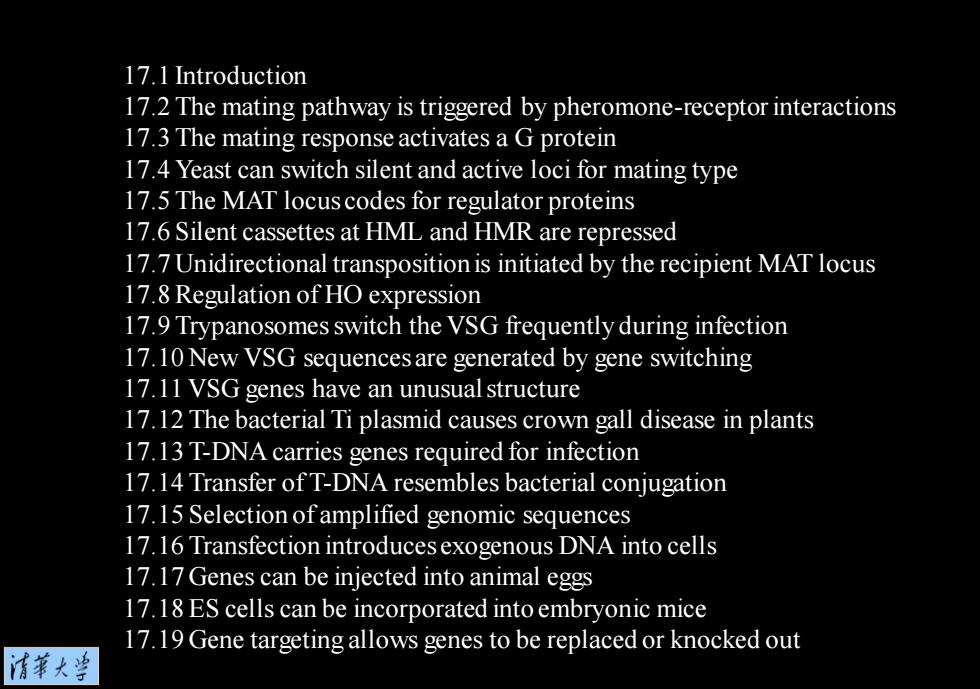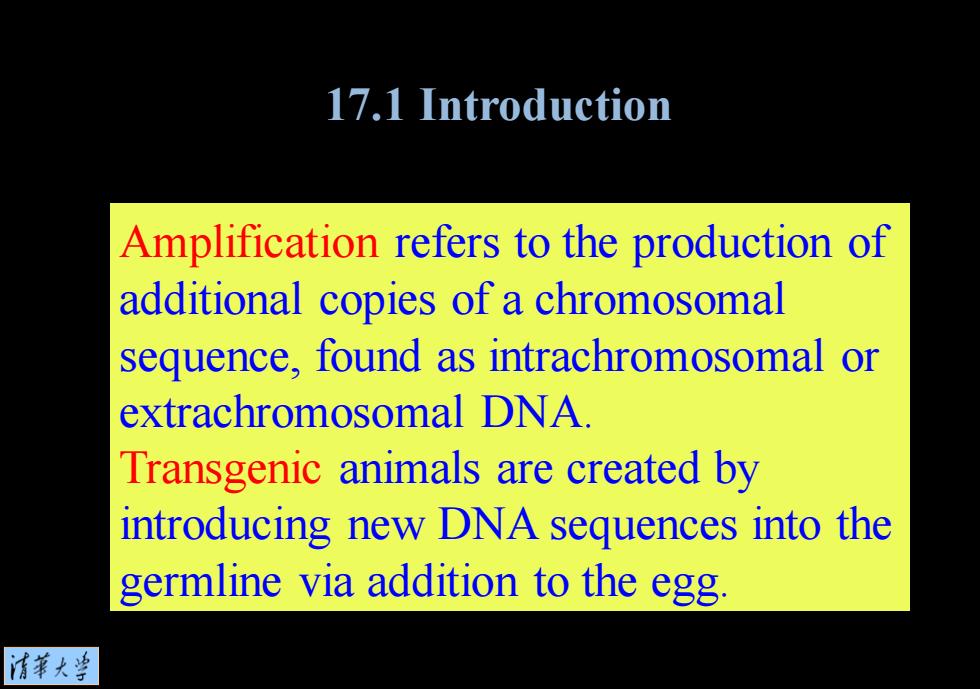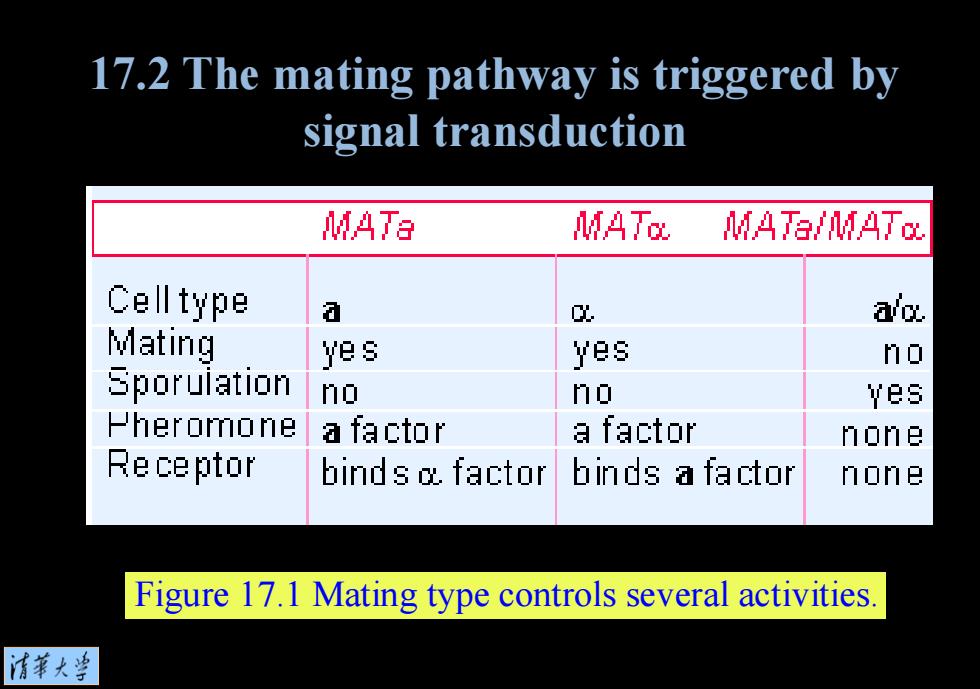
Chapter 17 Rearrangement of DNA 清革大当
Chapter 17 Rearrangement of DNA

17.1 Introduction 17.2 The mating pathway is triggered by pheromone-receptor interactions 17.3 The mating response activates a G protein 17.4 Yeast can switch silent and active loci for mating type 17.5 The MAT locus codes for regulator proteins 17.6 Silent cassettes at HML and HMR are repressed 17.7 Unidirectional transposition is initiated by the recipient MAT locus 17.8 Regulation of HO expression 17.9 Trypanosomes switch the VSG frequently during infection 17.10 New VSG sequences are generated by gene switching 17.11 VSG genes have an unusual structure 17.12 The bacterial Ti plasmid causes crown gall disease in plants 17.13 T-DNA carries genes required for infection 17.14 Transfer of T-DNA resembles bacterial conjugation 17.15 Selection ofamplified genomic sequences 17.16 Transfection introduces exogenous DNA into cells 17.17 Genes can be injected into animal eggs 17.18 ES cells can be incorporated into embryonic mice 17.19 Gene targeting allows genes to be replaced or knocked out 清菜大当
17.1 Introduction 17.2 The mating pathway is triggered by pheromone-receptor interactions 17.3 The mating response activates a G protein 17.4 Yeast can switch silent and active loci for mating type 17.5 The MAT locus codes for regulator proteins 17.6 Silent cassettes at HML and HMR are repressed 17.7 Unidirectional transposition is initiated by the recipient MAT locus 17.8 Regulation of HO expression 17.9 Trypanosomes switch the VSG frequently during infection 17.10 New VSG sequences are generated by gene switching 17.11 VSG genes have an unusual structure 17.12 The bacterial Ti plasmid causes crown gall disease in plants 17.13 T-DNA carries genes required for infection 17.14 Transfer of T-DNA resembles bacterial conjugation 17.15 Selection of amplified genomic sequences 17.16 Transfection introduces exogenous DNA into cells 17.17 Genes can be injected into animal eggs 17.18 ES cells can be incorporated into embryonic mice 17.19 Gene targeting allows genes to be replaced or knocked out

17.1 Introduction Amplification refers to the production of additional copies of a chromosomal sequence,found as intrachromosomal or extrachromosomal DNA. Transgenic animals are created by introducing new DNA sequences into the germline via addition to the egg. 清苇大兰
Amplification refers to the production of additional copies of a chromosomal sequence, found as intrachromosomal or extrachromosomal DNA. Transgenic animals are created by introducing new DNA sequences into the germline via addition to the egg. 17.1 Introduction

17.1 Introduction Amplification refers to the production of additional copies of a chromosomal sequence,found as intrachromosomal or extrachromosomal DNA. Transgenic animals are created by introducing new DNA sequences into the germline via addition to the egg 情菜大当
Amplification refers to the production of additional copies of a chromosomal sequence, found as intrachromosomal or extrachromosomal DNA. Transgenic animals are created by introducing new DNA sequences into the germline via addition to the egg. 17.1 Introduction

17.2 The mating pathway is triggered by signal transduction MATa MATo MATa/MATo Celltype a 以 alc Mating yes yes no Sporuiation no no ves Pheromone a factor a factor none Re ceptor bind s o factor binds a factor none Figure 17.1 Mating type controls several activities. 清苇大当
Figure 17.1 Mating type controls several activities. 17.2 The mating pathway is triggered by signal transduction